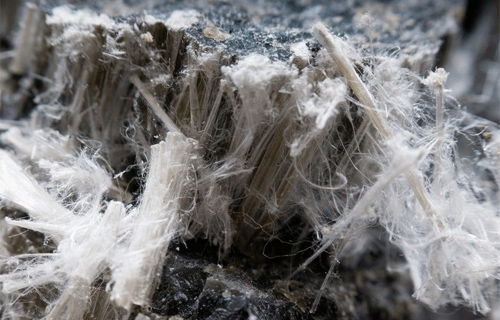What Is the Most Dangerous Type of Asbestos?

Asbestos is a term used to describe a group of six dangerous minerals which are durable and very resistant to fire.
Due to their great mechanical properties and fire-resistance, they have been intensively used in all kinds of products, from household appliances to construction materials, and are generally known to cause a deadly form of cancer called mesothelioma, as well as other serious diseases.
Although each type of asbestos has specific characteristics, all of them are equally hazardous and classified as cancer-causing substances by the Environmental Protection Agency (EPA) and various other health agencies.
How to identify asbestos
CHRYSOTILE
Also known as white asbestos, this mineral is the most frequently used type and is usually found in the walls, floors, ceilings, and roofs of homes and commercial buildings.
CROCIDOLITE
The so-called blue asbestos was mainly used for insulation materials, coatings, as well as for cement and plastic products.
AMOSITE
Brown asbestos is most often found in pipe insulation and thermal insulation, in ceilings, and in cement sheets.
ANTHOPHYLLITE
You can recognize this type of asbestos by its color, which varies from gray to soft green and even white. It was mainly used for construction and insulation materials, but in limited amounts.
TREMOLITE AND ACTINOLITE
These two minerals were not used commercially, but could be found contaminating other types of asbestos, such as chrysotile. They can have a white, gray, green, or brown color and can even be transparent sometimes.
Is one type of asbestos more hazardous than the others?
A common misconception is that, depending on color, a mineral is more or less dangerous. While some agencies claim that blue and white asbestos are more dangerous than the others, all types of asbestos can in fact cause lung disease and various forms of cancer due to the high toxicity of the small, microscopic fibers which can be easily inhaled or swallowed. As a matter of fact, EPA no longer tries to identify the most dangerous type of asbestos, as this aspect is quite unimportant, since all asbestos forms cause significant health problems. Instead, the agency focuses on achieving general regulation of asbestiform minerals.
EPA managed to regulate the above-mentioned types of asbestos in 1986 and since then, over 45 countries have completely banned the use of these hazardous minerals. However, even though the use of asbestos has diminished substantially over time, it is still present in a lot of products, mostly in older homes and public structures built prior to 1986. Moreover, other asbestiform minerals - which are not regulated yet - have been discovered in the meantime.
